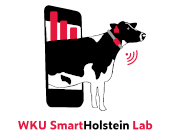
True protein, as the name implies, is the actual amount
of protein in milk, while the former standard, crude protein, is derived
from the nitrogen content in milk. Crude protein over evaluates the
amount of protein in milk because it includes non-protein nitrogen.
The new Federal Milk Marketing Orders, which went into effect January
1, 2000, pay for protein on a true-protein scale instead of the crude-protein
scale that had been used previously in many parts of the country. The
change was made because true protein is more accurately measured in
the lab and is more reflective of the nutritional and manufacturing
value of milk. On average, this change will decrease the protein test
for dairy cows by 0.19%. While this change does not affect the price
you receive for your milk (unless you have unusually high or low levels
of non-protein nitrogen in your milk), it does affect the protein level
that you see with your milk payment.
There has been strong support for DHIA to switch from
crude protein to true protein because true protein is the national payment
standard. Following a meeting of representatives of various industry
groups (dairy producers, DHIA, AI organizations, and breed associations),
the Council on Dairy Cattle Breeding approved a proposal stating that
for samples collected on May 1, 2000 and thereafter, all protein measurements
will be on a true protein basis. As part of the proposal, DHIA will
not convert any data; historical records that have been completed and
records in progress will not be adjusted to a true protein basis. DHIA
records that are currently in progress will be based on a combination
of crude protein and true protein. The committee believed that this
recommendation was the simplest, most economical and efficient method
to make the transition.
Official Holstein PedigreesTM will display
a true protein version of all records, according to recent action by
the Holstein Association's Board of Directors, which will allow one
heading on a pedigree and avoid labeling each individual record. This
means that the protein component of the production records on Holstein
pedigrees that were completed in the past or are currently in progress
will differ slightly from the crude protein or combination version calculated
by DHIA.
| Milk |
CP % |
CP # |
TP % |
TP # |
| 32000 |
3.59 |
1150 |
3.40 |
1089 |
| 34000 |
3.38 |
1150 |
3.19 |
1085 |
| 36000 |
3.19 |
1150 |
3.00 |
1082 |
| 38000 |
3.03 |
1150 |
2.84 |
1078 |
|
All pedigree records will be on one basis making it unnecessary
to label each record. This also avoids mixing types of protein in one
lifetime total. Some re-rankings will occur when moving to pounds of
true protein (see examples right). This will affect the placing of some
cows on the Official Holstein Protein Leader List. However, Holstein
awards, such as the PBR herd award and Gold Medal Dam, will remain unaffected
because the change to true protein will occur for all records. USDA-AIPL
will also adjust all records to a single basis when calculating production
evaluations, so PTAs will not be noticeably affected.
In response to industry requests, the Holstein Association's
Board has agreed to offer pedigrees tailored for U.S. breeders that
market internationally as well as international users of pedigrees.
To that end, pedigrees that list and label all records on a crude protein
basis will be available at the customer's request.
There are many advantages of making this change. It is
the quickest way to move forward with the more accurate scale, true
protein, and put crude protein, the standard of the past, behind us.
By displaying all records on a true protein basis now, there will be
less confusion in the long run and all domestic pedigrees and advertisements
will be able to display a seamless balance of true protein records.
Tom Lawlor, Director, Research and Development
1 Holstein Place, Brattleboro, VT 05302-0808
800-952-5200 in the US 802-254-4551
Fax 802-254-8251
[email protected]
|




